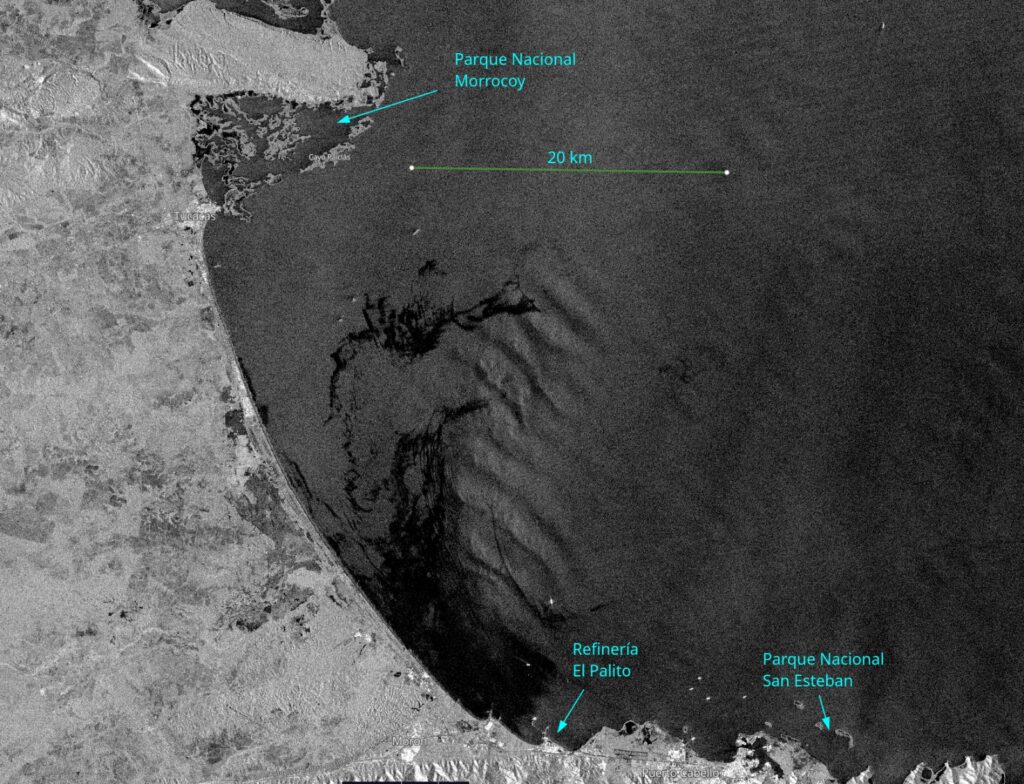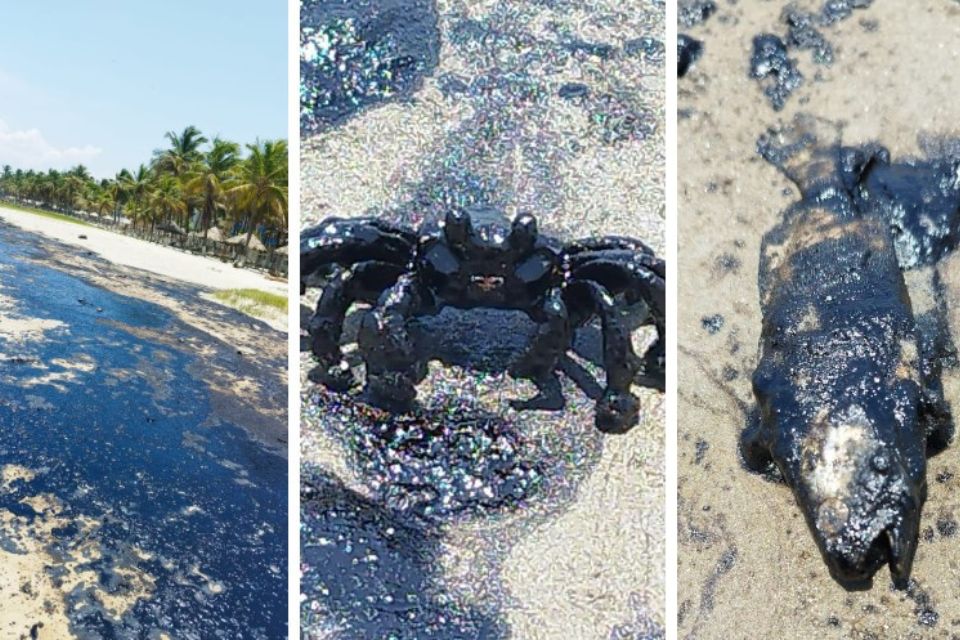Amidst an Electoral Crisis, Venezuela Faces Another Massive Oil Spill
A new oil spill, equal to 37,000 soccer fields, could be among the biggest in Venezuela’s history: and it has already created a damage area of 450km²


In March, thousands of cannonball jellyfish (Stomolophus meleagris) were reported in Chichiriviche, Bahía de Cata and Puerto La Cruz, from western to eastern Venezuela. Soon, the unusual mass sightings –almost like stars reflected on the sea’s surface– were reported in places like Chuao, Choroní, Naiguatá and even the industrial port of Punto Fijo. “This is a warning”, Joxmer Scott Frías, a biologist of the Central University of Venezuela said, “because we are in the dark and we do not know what is happening with the different species of jellyfish.”
But Gustavo Carrasquel, director of the environmentalist group Azul Ambientalistas, had his own theory based on previous studies from Mexico and Peru. The cannonball jellyfish bloom, he assured, was the result of the increasingly common oil spills in Venezuela’s northwestern coasts. Following oil spills, he said, bacteria bloom as they feed from hydrocarbon degradation processes. These bacteria, then, are devoured by copepods, tiny crustaceans which serve as the jellyfishes’ main food.
In short, the great winners of the collapse of the Venezuelan petrostate had been the cannonball jellyfishes.
Five months later, amidst a deepening political crisis, another massive oil spill –in between the El Palito refinery and the Planta Centro thermoelectric– has spilled over the coasts of Boca de Aroa and Tucacas in Falcón. It would have followed at least 35 previous oil spills and at least two simultaneous ones (one in Carabobo and one near Mitare, Falcón), according to the monitoring of environmental human rights NGO Clima 21. “It’s quite possible that the real number is far bigger”, Alejandro Álvarez Iragorry, the NGO’s coordinator, says, “PDVSA hasn’t published anything about spills since 2016.”
Last year, Clima21 concluded that Venezuela’s rundown oil industry produced an average of 7 oil spills per month.

The new spill, around 225km² or equal to 37,000 soccer fields, could be among the biggest in the country’s history: and it already hit at least 5 km of beach and created a damage area of 450km², according to Eduardo Klein, director of the Remote Sensing and Geo-Spatial Analysis Laboratory of the Department of Environmental Studies at Universidad Simón Bolívar. Sentinel satellite images seem to indicate that “the spill seems to be bigger than the previous two”, Klein says, referring to other massive oil spills that affected the same areas in 2023 and 2020.
The latter, in fact, spilled over the beaches of Morrocoy National Park, known for its biodiversity of marine and bird species. While the new spill has not reached Morrocoy yet, Klein says, it has already affected the Norte, Medio and Chico cays in the nearby Cuare Wildlife Refuge. In fact, reports by locals from nearby Tucacas show dead fish and gluey crabs covered in oil washing to blackened beaches.
Last year, Clima21 concluded that Venezuela’s rundown oil industry produced an average of 7 oil spills per month.
The spill could also affect the tons of tiny invertebrates in the sand, Klein says. In Venezuela, previous spills have had devastating consequences for these small animals. In 1997, for example, a massive oil spill in Lake Maracaibo affected 48 kilometers of sand coasts and killed 7,5 million macroinvertebrates and wiped 51 species of mollusks, annelids and arthropods in the affected areas. The next year, a spill over Higuerote resulted in “tons of dead chipichipi and guacuco clams washing in the beach for months”, Klein says.
Anyway, the new spill’s impact is currently very difficult to measure. It is unknown, for example, if the oil is affecting the seabed or fragile ecosystems like mangroves and coral reefs. “Without information on the volume and characteristics of the spilled hydrocarbon, it is very difficult to estimate the effects”, Álvarez Iragorry says, “a crude oil spill is not the same as a fuel oil spill. It is speculated that in this case it may be residues from the oil processing processes, which are waste products that contain very toxic compounds.”

Measuring its impact, Klein says, would require new research and studies but this would need permissions, financing and qualified personnel – all of which are difficult to get by in Venezuela. More importantly, he says, “the state limits access to the area and blocks information.”
In fact, Álvarez Iragorry says, the state has responded with a “profound official silence”. For Klein, PDVSA –unlike the pre-Chávez times, when it had quick and well-designed response plans– had insisted on a policy of “voluntary silence” backed by the Ministry of Ecosocialism which “should be looking after [the environment] but has PDVSA’s back.” The post-electoral response, meanwhile, hasn’t made the response worse. “But in the current context of violence against journalists and the media, gathering information could be very dangerous”, Álvarez Iragorry says.
And the August spill’s fate remains uncertain. At this time of the year, Klein explains, caldereta winds –or warm Caribbean land breezes– are stronger. As they constantly change through the day, the eventual direction of the spill is difficult to estimate. It could scatter, it could go east towards the touristic town of Choroní or it could continue westwards – and hit Morrocoy once again.
Caracas Chronicles is 100% reader-supported.
We’ve been able to hang on for 22 years in one of the craziest media landscapes in the world. We’ve seen different media outlets in Venezuela (and abroad) closing shop, something we’re looking to avoid at all costs. Your collaboration goes a long way in helping us weather the storm.
Donate




